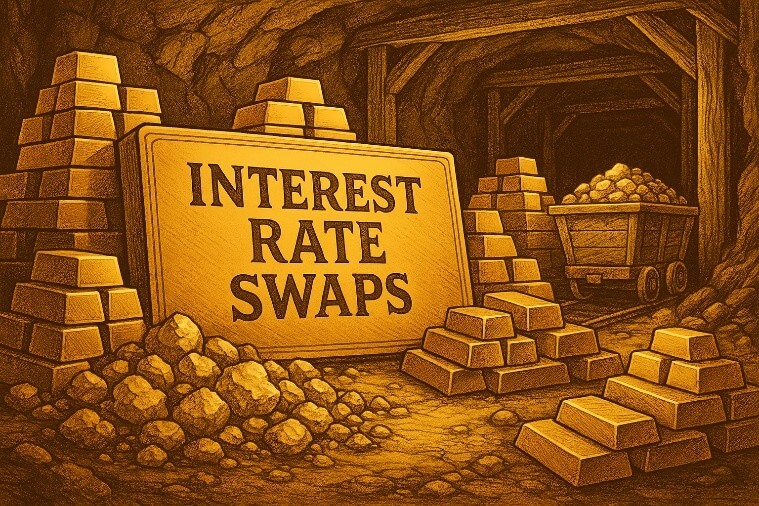November 3, 2025
How Retiring Physician Partners Could Be Overlooking a Goldmine in Interest Rate Swaps
Retirement: the golden years of golf, grandkids, and, hopefully, a well-earned windfall from your real estate partnership buyout. But for many physician partners, there’s a part of their real estate investment that’s often left out of the spotlight … and out of their retirement check. We’re talking about the interest rate swap, the financial equivalent of that dusty Picasso in the attic which no one realized was worth millions.
Wait, What’s an Interest Rate Swap Again?
Think of an interest rate swap like a financial handshake between your group and a bank. It’s a contract that exchanges floating-rate interest payments for fixed rate payments - kind of like trading Johnny Manziel for Tom Brady. Floating interest rates aka Johnny Manziel ... in his prime hype years. Electrifying, yes. Capable of brilliance, absolutely. But with unpredictability baked in. One game, he’s dazzling with off-script plays; the next, he’s throwing interceptions or missing practice. There’s a chance for greatness, but also a risk of chaos.
Fixed Rates aka Tom Brady, the football equivalent of a Swiss watch. Predictable. Steady. Week after week, year after year, you know what you’re getting: smart decisions, consistent execution, and dependable leadership. He may not always be flashy, but you can build a game plan around him with confidence.
So, why do banks and borrowers use swaps? Swaps are frequently used by banks to offload risk, which can oftentimes allow them to provide more attractive rates to the borrower. Depending on interest rate movements, swaps can either be “out of the money” or “in the money.” For those groups that were fortunate enough to lock in a swap before rates rose, it is more than likely the latter, and it could be a sizeable asset.
Here’s the Problem: Everyone Forgets the Swap
When physician partners retire and go through the buyout process, the operating agreements rarely account for interest rate swaps. Yet as we’ve established, they can be a significant asset or liability at the time of retirement. You may remember an article that we wrote previously, when rates were at all time lows, which highlighted that retiring physicians were running off without footing the bill when they had significant swap unwinds that were underwater and being left for remaining partners to bear. Now the tables have turned, and the physicians who are close to retirement could be missing out.

The $100,000 Oversight
Imagine this: Dr. Smith retires from a real estate partnership of 10 doctors in July. The group’s interest rate swap, signed years ago at a 3% fixed rate, is now worth $1,000,000 because rates have climbed. If the group doesn’t adjust the buyout formula to account for that asset, Dr. Smith gets nothing from it. Come January, the remaining partners unwind the swap, pocket the gain, and … oops, sorry, Dr. Smith.
How to Avoid the Swap Snafu
Get a valuation – Before retiring, ask for a fair market valuation of the swap. It may be more than you think. If it’s worth further discussion, there are two avenues to be explored:
- Include it in the buyout formula – If it's an asset, shouldn’t it be treated like one?
- Unwind it pre-retirement – If you want your fair share, consider refinancing to close out the swap while you’re still there to receive the gain.
In Conclusion: Don’t Forget About Your Swap
In our experience, there’s not necessarily a right answer on how to handle interest rate swaps. But if you’re nearing retirement, you probably at least want to check to see if you have an interest rate swap that’s in the money. That interest rate swap might just be your hidden retirement bonus. Don’t let your final gift to the group be your unclaimed, unnoticed, or uncelebrated share of a six-figure asset.
After all, you took the risk when you signed on for the swap.
Questions? Get in touch with us at solutions@cmacpartners.com or schedule a meeting with our team.